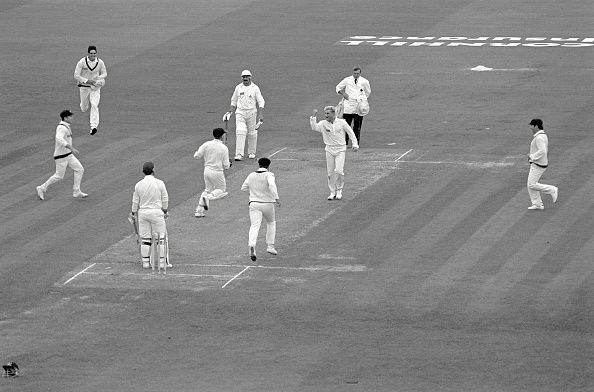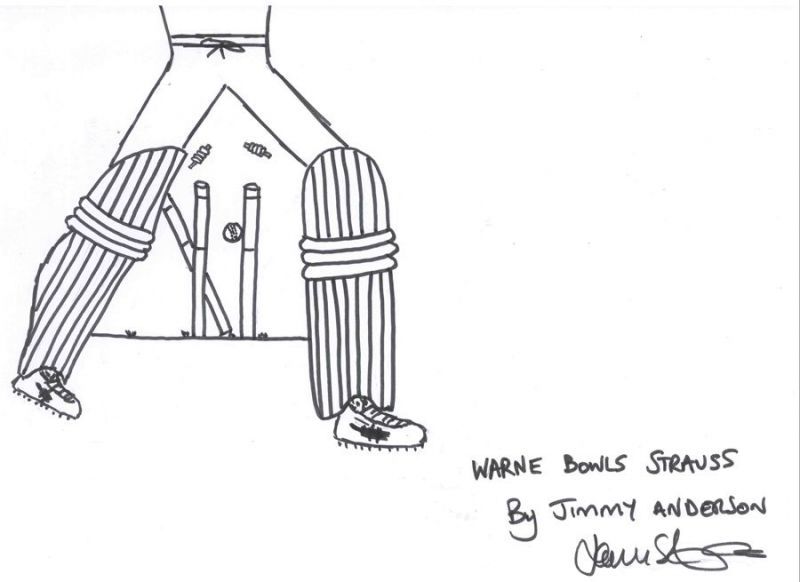
25 years of magic: Shane Warne and the ball of the century

June 4, 1993. A time-stamp in an uncomplicated age. You have just seen the marvels of a mobile means of telephonic conversation unravel, you spend your summers doing everything under the sphere of revelry but watch monotonous unrelenting franchise T20 cricket, you do not even fathom a cricket match lasting just three hours, Super Mario Bros. in 64-bit graphics is the greatest piece of gaming you have seen, Amazon has not even been conceived, West Indies run riot all over the cricketing world, Sachin Tendulkar though prodigious has the same number of ODI centuries to his name as Misbah-ul-Haq would finish his celebrated career with.
It indeed takes you back to simpler times, times so simple that spinners in cricket tweak the cherry with their fingers, the use of wrist has become obsolete, and why not? The game is evolving, matches are played under lights, often in colored clothing and apparently there has come into existence an entity named "pinch-hitter". Everything moving towards a faster, more dynamic game has indeed made the slow exotic art of loopy leg-spin extinct.
Out strolls Shane Warne, not the least of athletic looks about him, about to bowl his first ever ball on English soil. His mind, haphazard. It is the first match of an Ashes series. The stakes are higher than he has ever been subjected to. This is the day he has played over in his head for the better part of the last two decades.
Here is his chance, to bowl a neat, little spell to English legend Mike Gatting and steadily work towards increasing his confidence at the highest level, he just wants to land the first ball in the right spot as an adherence to Ian Healy's later immortalized cry of "Areas, Shane!" What if he gets it wrong? As a leg-spinner you can always bowl a loosener to begin with, maybe even two. What if he bowls a juicy long hop first up and it becomes an ominous sign of how his career will pan out? Will the unforgiving English crowd excuse his faux pas. Probably not.
It is now time to move out of the freeze-frame as a disgruntled Allan Border barks from mid-on, "What the hell is taking so long?" Great, first the nerves, then the gravity of the situation and now the potential wrath of the toughest skipper he will play under.
On he walks towards the crease, his stroll of a run-up that will become one of the most iconic sights in modern cricket. Starting over the wicket, he bowls his first ball. You see it come out of his hand fizzling with revolutions but it is going down an entirely wrong line. For a brief moment, Warne's arrival seems to be very anti-climactic to the build up. The ball is going down the leg side, it pitches at least twenty odd centimeters outside the leg stump.
"Well, leg-spin is dead for a reason," you muse.
The next split second will go down as one of the most defining moments in cricketing history. The ball pitching on an unassuming spot turns sharply and turns just enough to beat Gatting's outside edge from the front. It turns just enough to clip the off-stump and send Healy and Gatting, the closest witnesses into disbelief, both, however, express it differently, and their respective reactions to it would become symbolic trademarks for the next 13 years of Ashes cricket to come.

Healy leaps in the air with ecstacy, Gatting looks befuddled as though something unfathomable has transpired.
Warne, though, looks on and raises a pumped fist as though seeing a script go down exactly as he wanted to. He would go on to take a few 700 odd more wickets with the red ball, and all of them perhaps more meticulously planned, thought out and executed. But never again would he emulate this, never would the circumstances align so well to make for a single delivery in cricket this incredible and embossed into every fan's memory, be it a puritan who tragically looks back at the unadulterated era of the seventies where a sombre Sunil Gavaskar battled fire with modest stonewalling or a youngling who enjoys an Andrew Tye knuckle ball just deceive Hardik Pandya enough to have him caught three meters off the boundary rope laced with sponsors.
Wasim Akram swung the ball miles, sometimes in defiance of apparent physics, Muttiah Muralidharan spun it square against hopeless squared up batsmen, Curtly Ambrose knocked over stumps with disdain through breath-taking pace yet they never became contenders for the unofficial yet authoritative title of the greatest ball ever delivered.
"That ball" by Warne, bowled exactly 25 years ago, started off as something that would pitch straight from the point of release, then smoothly drifted in the air in a perfectly defined parabolic path in three dimensions as Gatting learned the implications of the Magnus Effect on a cricket ball the hard way and then the belligerent turn, completely contrary to how the ball had traversed eighteen odd yards off the pitch so far, to not obliterate, but just smother the top of the off-stump with a small kiss of doom.
In a match that featured a typical Mark Taylor ton, a rare Australian bowling attack without a single New South Welshman, saw Ian Healy score 25% of his career Test tons and had England's best bat Graham Gooch get out in the most unusual of ways by handling the ball at 133, it is one solitary ball that we remember to this day.
Wrist-spin had not only come back from the oblivion but had been made look like the Belle of the Ball by a lackadaisical boy from the modest suburbs of Upper Ferntree Gully, Victoria.
Shane Warne had not just announced his arrival onto the international scene, but made a statement and presented a blueprint of extravagant skill and a penchant for picking his moments that radiated the heightened drama of a Spanish soap opera where the ridiculous and the exaggerated translated into the mundane.
All this happened in the span of ten seconds, exactly 25 years ago. Only Shane Warne could have done it. Only he could have taken a skill so neglected and turn it into an art that was the equivalent of WMDs to spur an era where Australia would take over the mantle of the world's best from the West Indies and fashion it for the better part of the next decade and a half.

June 4, 2018. Everything moves at a neck-breaking pace, Sachin Tendulkar has something around 49 ODI centuries to his name, West Indies had to struggle to even participate in the World Cup, the way cricket is played seems almost post-apocalyptic. So much has changed.
Not everything, Warne's "Ball of the Century" brings the same rush of exhilaration to a viewer as it did then, the same feeling of being instantly shocked n' awed and the same futile attempt put into a frame-by-frame recreation of it.